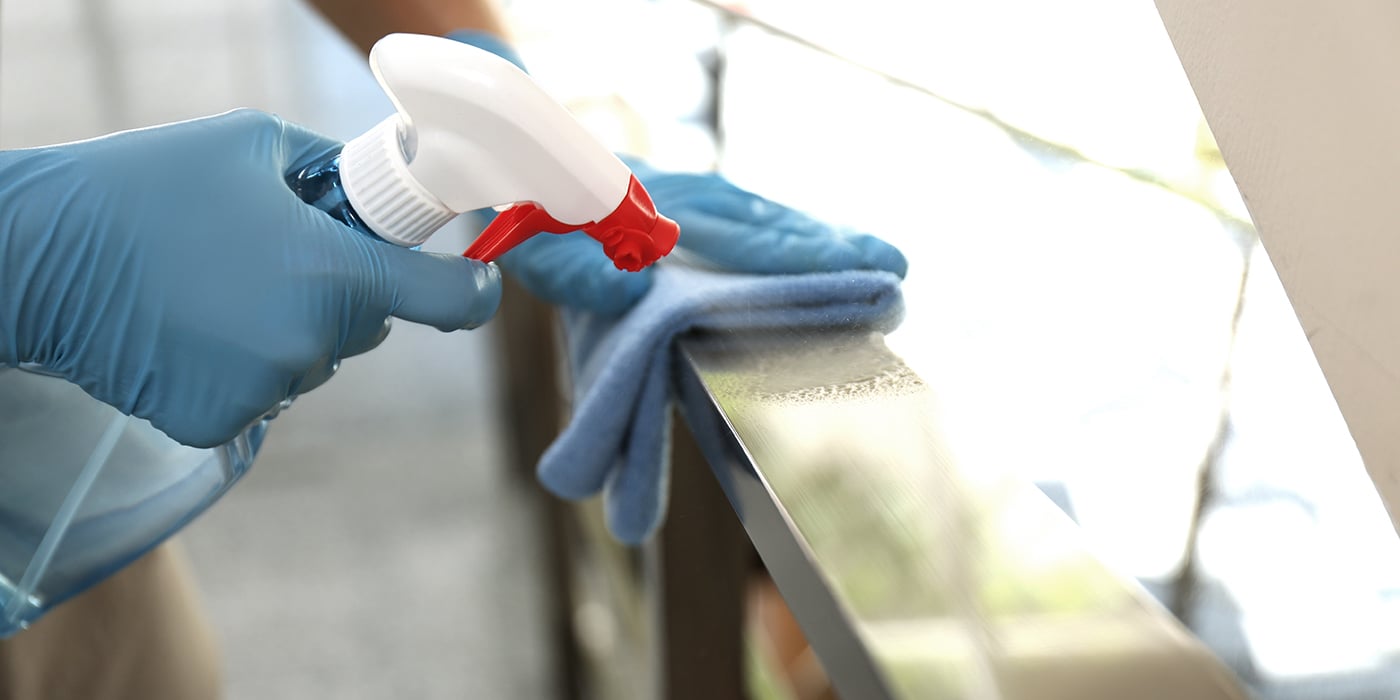In the cleaning industry, it is very common to hear the words “cleaning”, “sanitizing”, and “disinfecting” used to describe the daily tasks that are being done by cleaning workers.
Although these words are used frequently, oftentimes, these words can be used to incorrectly describe one of the other activities – a circumstance that can potentially lead to confusion, especially since these words do have different meanings and are not meant to be used interchangeably.
So what does each word mean, what’s the difference, and why should we care?
The Differences Between Cleaning, Sanitizing, and Disinfecting
First, let’s start with a few descriptions.
![]()
Cleaning can be described as “removing dirt, grime, organic matter, and other impurities from surfaces and objects using chemicals, tools, or equipment”. Cleaning works by using cleaning chemicals and water to physically remove dirt and germs from surfaces with the aid of cleaning tools like microfiber, wipes, rags, dusters, or scrubbing pads, and cleaning equipment like no-touch cleaning caddies, autoscrubbers, and carpet extractors.
![]()
Sanitizing can be described as “killing bacteria on surfaces using chemicals”. Sanitizing further reduces the remaining germs left on surfaces after cleaning to levels considered safe by public health codes and regulations. Sanitizing works by using chemicals to inactivate at least 99.9% of the germs and bacteria on a surface and 99.999% of the germs and bacteria on a food contact surface.
![]()
Disinfecting can be described as “killing viruses and bacteria on surfaces using chemicals”. Disinfecting is even more effective than sanitizing in reducing the remaining germs left on surfaces, and in addition to killing bacteria it also kills viruses and fungi. Disinfecting works by using chemicals to inactivate at least 99.9999% of germs, bacteria, viruses, and fungi on a surface.
99.9% or 99.9999% - Understanding Log Reductions
When we say that 99.9999% of the germs are inactivated, what do we mean?
Logarithmic (log) reduction is the standard used to quantify disinfection by the U.S. Environmental Protection Agency (U.S. EPA). The EPA guidelines for disinfectants require a 6-log reduction in germs, bacteria, viruses, and fungi (pathogens) in less than 10 minutes in order to claim disinfection. As referenced above, the guidelines for sanitizers are less than for disinfectants.
A log reduction correlates to a 10-fold reduction in pathogens from the amount present to start – and typically when measuring log reduction, there are 1,000,000 colony forming units (CFUs) of a pathogen to start. The following chart illustrates the difference between a 3-log (99.9%) and 6-log (99.9999%) reduction in pathogens, and displays the efficacy of the ascending log reductions:
| Log Reduction | Number of CFUs Remaining | Percentage of Reduction |
| 0-log | 1,000,000 | 0% |
| 1-log | 100,000 | 90% |
| 2-log | 10,000 | 99% |
| 3-log | 1,000 | 99.9% |
| 4-log | 100 | 99.99% |
| 5-log | 10 | 99.999% |
| 6-log | 1 | 99.9999% |
A Word from the EPA
As referenced before, the U.S. EPA regulates products that make sanitizing and disinfecting claims, and their website offers the following helpful table to further delineate the differences between cleaning, sanitizing, and disinfecting:
| Action | What does it do? | Does the EPA regulate the product? |
| Cleaning | Cleaning removes dirt and organic matter from surfaces using soap or detergents. | EPA regulates cleaning products only if they sanitize or disinfect. Learn more about EPA's role. |
| Sanitizing | Sanitizing kills bacteria on surfaces using chemicals. It is not intended to kill viruses. | Yes, EPA registers products that sanitize. |
| Disinfecting | Disinfecting kills viruses and bacteria on surfaces using chemicals. | Yes, EPA registers products that disinfect. To find disinfectants for use against SARS-CoV-2 (COVID-19). |
| Using hand sanitizer | Using hand sanitizer kills pathogens on the skin. | No, hand sanitizers are regulated by the Food and Drug Administration (FDA). |
In conclusion, there are important differences between cleaning, sanitizing, and disinfecting, and your Envoy Solutions Account Consultant can help you identify the right mix of products to help you keep your facility cleaner, healthier, and safer.
Merriam-Webster website, Commonly Confused – “Clean, “Sanitize”, or “Disinfect”? Keep It Clean
Infection Control Tips website, Misleading Math: Kill Claims and Log Reduction


